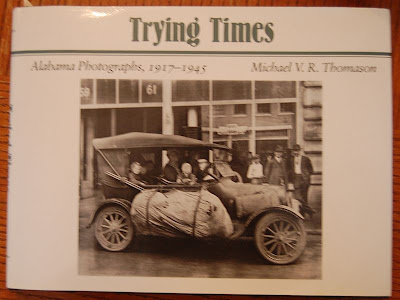You could add the 1901 Alabama constitution to the list of required reading also. I'll have something to say about that in my Western Tribune column next week.
First, though, some housekeeping.
To the left you will see a button where you can donate to Bessemer Opinions. While you will never be required to pay to read what is on this site and my others, it does take time to research and produce the content that you see. So if you feel generous from time to time, and appreciate my effort to get the progressive blue message out in this red state, click on the button and make a donation. Thanks.
Carry Me Home, Birmingham, Alabama, The Climactic Battle of the Civil Rights Revolution, by Birmingham native Diane McWhorter, is a must read. Published in 2001, Carry Me Home is both a personal memoir and a historical account of the fall of segregation. If you are from Birmingham, you will recognize family names of the your friends and co-workers and you might be surprised by what you learn.

Alabama in the Twentieth Century by Wayne Flynt was published in 2004. Flynt is a Distinguished University Professor of History at Auburn University, and this book outlines the issues by topic rather than chronologically. The books is divided into three parts: Alabama's Political Economy (starting with the 1901 Constitution), Alabama's Society, and Alabama's Culture (with a chapter titled What Would Jesus Do? Religion).

Slavery by Another Name by Douglas A. Blackmon was published in 2008. "Shocking...Eviscerates one of our school-children's most basic assumption: that Slavery in America ended with the Civil War" is how the New York Times described this book. There was an article about it in the Birmingham News recently, but many of us heard the author during interviews on NPR or read of this story in the Wall Street Journal.
As if our history of slavery is not bad enough, what is exposed in this book should make very American look to the ground in shame. The photographs are particularly disturbing.
The book tells the history of a post civil war systematic re-enslavement of blacks in our state under the guise of law enforcement and justice and deals of human labor trafficking. It is a difficult book to read because the personal stories of the individuals are so tragic and so, unfair.

Trying Times, Alabama Photographs, 1917-1945, by Michael V. R. Thomason, was published in 1985. This book may be difficult to find but I might let you borrow mine. Or look at it over here.
This book is a photo-essay of the social and economic history of our state during those years. There is an introduction and a short commentary, and each photograph is accompanied by a paragraph explaining it.
Near the middle of the book, opened to pages 152 and 153, are two photographs. On the left hand side is a picture of a tenant farmer family in Greensboro in 1941, in their newspaper lined cabin, with a black and white cat curled up on the floor. On the facing page is a photo of a white family taken in 1939. The children have hookworm and the woman has pellagra. "Neither affliction was uncommon," the caption informs us. Unexpectedly, under the bed in the photo, is a black doll, presumably belonging to one of the little white girls in the photo.
 There are other good books about our history and society, bu these four can catch you up. What better on a cold winter evening than to turn off the tv (once the Olympics are done) and crack open a book that may do more than just educate you. It might lead to some self-discovery, and that means being honest with yourself and your feelings and beliefs, and that is always a good thing.
There are other good books about our history and society, bu these four can catch you up. What better on a cold winter evening than to turn off the tv (once the Olympics are done) and crack open a book that may do more than just educate you. It might lead to some self-discovery, and that means being honest with yourself and your feelings and beliefs, and that is always a good thing.

























